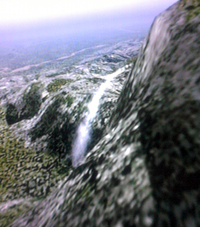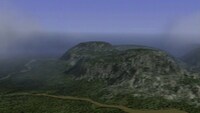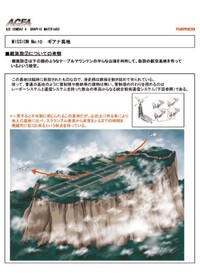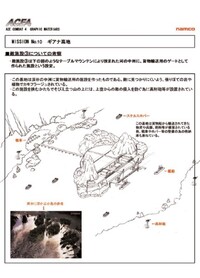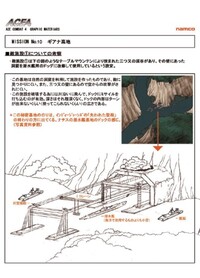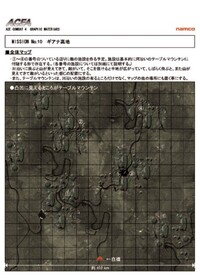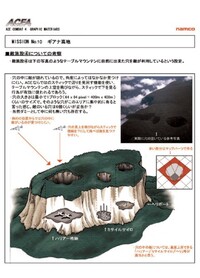Part 10: Mission 10 – Operation Woodpecker, February 28th, 2008
Tango LineMission 10: Operation Woodpecker – February 28th, 2005
Overview: ISAF pushes deep behind the Erusean Tango Line for the first time in an attempt to retake Istas Fortress south of Los Canas, the former ISAF GHQ site. Rather than put ground troops in harm’s way, Mobius 1 and the ISAF air strike team are sent in to conduct a hit-and-fade assault on Istas—well inside Stonehenge’s firing range.

Guest Commentator: For today’s video I am joined by
He is also one of the volunteer translators working on the Project Nemo fan translation of Ace Combat 3: Electrosphere. After watching Lunethex’s LP of Electrosphere, he was inspired to join the PN team and is now helping them put further polish on the localization effort.


TANGO LINE
Originally referring to the farthest extent Stonehenge’s firing radius, the “Tango Line” has been repurposed by the Eruseans to form the central line of defense for their occupied territory on mainland Usea. With ISAF retaking FCU territory along the east coast, this network of captured ISAF facilities and embedded Erusean troop positions has become the frontline in the Allies push into the heart of Usea. Retaking Istas Fortress will give ISAF a vital springboard towards securing the rest of FCU territory, starting with the city of Los Canas in central Usea, the site of the former (and, hopefully future) ISAF General Headquarters.

LOS CANAS
Situated in the geographical middle of Usea, the major metropolis of Los Canas is the continent's central city and main hub of transit, commerce, and military co-ordination, both within Usea and around the globe. Prior to the Erusean forces seizing control over Stonehenge, the city was home to ISAF's original GHQ in conjunction with Istas Fortress in the Choppinburg highlands.
With ISAF's air forces routed by Stonehenge, and Istas Fortress coming under heavy shelling prior to the Erusean eastward advance, Los Canas was abandoned by the alliance as it consolidated its forces at North Point outside of the STN's operational radius in preparation for a counterstrike operation. However, many ISAF soldiers and officers chose to remain in the city as it fell behind enemy lines and became a part of the Los Canas Resistance forces, operating in tandem with their sister resistance cells across the continent like the one currently sabotaging the Erusean efforts in San Salvacion. If the Erusean forces at Istas can be neutralized, it will give ISAF a clear route to bypass the Tango Line and liberate the city from the south.
Retaking Los Canas and Istas Fortress will solidify ISAF's control over western Usea and return the FCU to a state of semi-normalcy now that the majority of its political territory has returned to Allied control.
In Spanish, the grammatically correct "las canas" translates out to "grey hair"

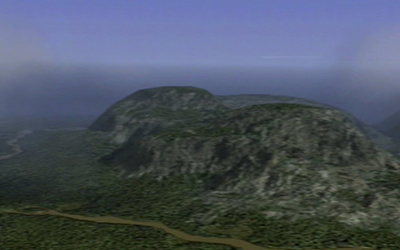
ISTAS FORTRESS
Constructed in the early 90s by the former Federation of Central Usea Allied Forces, Istas Fortress is one of the most advanced fortress complexes on the Usean continent. Located in the mountainous rainforests north of the Seal’s Bridge peninsula, Istas Fortress served the primary ISAF military facility on Usea short of its civilian general headquarters located in Los Canas. The fortress saw action during the Continental War of 1998 as well, serving as provisional general headquarters for the FCU Allied Forces in their fight against the URF. The facility currently resides under Erusean occupation following its abandonment by ISAF in the latter’s retreat across Petrol Coast Channel to North Point after losing control of Los Canas.
Istas itself is comprised of four primary blocks, each serving a vital portion of ISAF’s army, naval, and air force apparatus. Scion Air Base, built atop a large mesa at the south of the facility, was the home of many pilots in the ISAF air strike team before ISAF was forced off of Usea by the Eruseans. (Remember, Mobius 1 is an ISAF Navy pilot hailing from the U.S.S. Fort Grace. He merely got repurposed into the ISAF Air Force due to manpower issues.
 )
) In the west is the submarine dock and supply base, one of the largest inland naval stations on the continent. Submarines and naval ships are capable of docking at this facility by following the deep river inland from Seal’s Bridge. Spy photographs taken by SR-71 recon planes and the reconnaissance satellite launched from Comona have shown that the few remaining ships from the Aegir Fleet to survive the assault on Comberth Harbour fled to Istas Fortress for repairs after escaping Comberth.
To the north, buried under the mountains, lies the actual fortress complex of Istas, its heart and nerve center. These facilities are untouchable by standard fighter assault, being hardened against potential nuclear strikes. They were briefly opened to the public as an impact shelter in preparation for Ulysses Day. Additional bunker facilities have also been built around Istas since its initial construction in the run up to the Ulyssess 1994XF04 impact. The fortress is even capable of withstanding direct shelling from Stonehenge.
And lastly, to the east are the VTOL launch hanger facilities. Built in a series of sinkhole caves in the eastern mountains of Istas, these facilities use the natural geography of Istas to their advantage by forming natural bunkers to protect VTOL launch aircraft from any potential attack short of high-risk direct dive-bomb attacks.
As a matter of trivia, “Istas” is the Latin accusative feminine plural form of “iste” effectively meaning “that”. When the game says “Istas Fortress” it literally means simply “That Fortress.” I don’t particularly believe this to be an intentional thing on Project Aces’ part, however.

Aircraft featured in Mission 10: Operation Woodpecker

Mi-24 Hind
Manufacturer: Mil Moscow Helicopter Plant
Role: Gunship/Assault Helicopter/Troop Transport
Manufactured: 1969–Present
Status: In Service
Primary Operators: Russia, Ukraine, Afghanistan, Syria, Iraq, Libya
Quick Facts:
- Appears in Ace Combats 2, 04, and Assault Horizon Legacy as an enemy unit, in Ace Combat X during a non-gameplay storyline sequence, and in Assault Horizon as a playable aircraft.
- Designed in the 60s by Mil founder and chief designer Mikhail Leontyevich Mil to function as a rapid action anti-infantry attack helicoper.
- Currently in active service in over 50 countries around the globe.
- Known by the NATO reporting name “Hind,” the term for a female dear. (A male deer is a Hart
 )
)
- The Mil-24 is the Russian-exclusive version of this helicopter. The export versions are the Mil-25 and Mil-35 (the Hind D, and Hind E, respectively).
- Russian pilots refer to the Hind as the “flying tank,” due to its vast armament payload and general material longevity in combat situations.
- Has seen active combat in nearly every notable international conflict outside of Yom Kippur War and the Falklands War.
- No direct NATO or US-operated parallel exists to the Hind. The Sikorsky UH-60 Black Hawk is a close but not total approximation, and the Bell UH-1 “Huey” Iroquois was only capable of doing one of the Hind’s dual roles (gunship/troop transport) at a time.
- As such, it is acknowledged as the world’s only “assault helicopter”.
- The Mil-25 Hind D has a famous cameo in the opening minutes of Metal Gear Solid. Solid Snake famously (and somewhat erroneously) remarks “Colonel, what’s a Russian gunship doing here?” – forgetting what we just learned a few points up that the Hind D is the export model operated by non-Russian nations, while still being of Russian design.

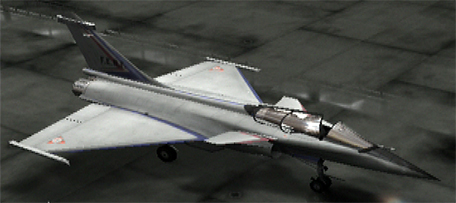
-
Faye
- Plane: Rafale M
- Mission 10
- Spawn conditions: Appears northwest of the resupply base, west of the submarine base.
Kadorhal posted:
Ace Number Ten is Faye. Named for Hervé Auguste Étienne Albans Faye, born October 1st, 1814. French astronomer, best known for the discovery of 4P/Faye, discovered in November 1843, which attracted worldwide attention and in the following year won him the Laland Prize from, and a membership in, the French Academy of Sciences. His work covered the entire field of astronomical investigation, from the determination of comet periods to the study of stellar and planetary movements, and advancing original theories on the nature and form of comets, meteors, the aurora borealis, and the sun. Died July 4th, 1902, at 87 years old.
Fun thing about his paint scheme is that it's the one applied to the original Rafale A prototype. This series really likes prototype paint schemes, as I'm pretty sure I already ranted about in regards to the S/MTD.


Tracks featured in Mission 10:
DISC 1

Concept art and in-game renders of the various parts of Istas Fortress:
